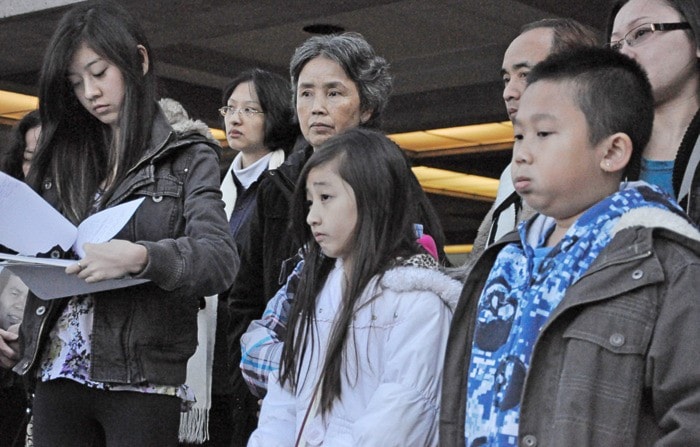The incident at a Langley mushroom farm in September, 2008 that killed three workers and left two permanently brain dead could have been prevented, according to a WorkSafeBC report released Monday.
Workers at the A-1 Mushroom farm on 16 Avenue were exposed to a lethal level of hydrogen sulphide gas while trying to unclog a pipe inside an enclosed pump shed.
The owners of the farm and companies A-1 Mushroom Substratum Ltd. and H.V. Truong were fined $350,000 by a provincial court judge on Friday.
“The investigation identified there were systemic issues in the design and construction of the facility.
“When the facility was operational, employers didn’t have the proper health safety programs in place. Specific to the pump shed, which was determined to be a confined space, it wasn’t in compliance with the regulation and the laws as is required,” said WorkSafeBC investigator Jeff Dolan.
Had proper regulations been followed, the fatal incident could have been avoided.
The incident occurred when a butterfly valve became plugged with chicken manure, straw and gypsum in the pump house that managed the flow of fresh and used water.
The owners had a shed built around the pumps to prevent them from freezing in the winter.
It had no proper exits or ventilation and is determined by the report to be a confined space.
On Sept. 5, 2008 a plumber tried to unclog the pipe and asked the owners to hire a sewer pump-out service, but instead employees were sent to unclog it themselves.
Ut Tran was the first victim. While attempting to get at the blockage, he said he smelt something strange, took one step and fell face down into 16 inches of water. It is unknown if he had died instantly or was in an unconscious state at first, the report says.
His supervisor Thinh Huu Doan went to get help, while Thang Tchen stayed in the shed with him.
In the next few minutes, three other men would enter the shed and be overcome by the fumes, resulting in the deaths of Tran, Jimmy Chan and Han Pham, and permanent brain damage to Michael Phan and Tchen.
An air sample inside the clogged pipe was taken on Jan. 29, 2009 and found a reading of more than 500 parts per million of hydrogen sulphide. Breathing in this gas as this high of concentration results in “immediate loss of consciousness. Death is rapid, sometimes immediate,” the report says.
To begin with, A-1 Mushroom did not have a health and safety program for any of their operations. The workers were not educated on possible dangers nor were they provided with proper safety equipment.
According to the report: “The workers had no knowledge of the hazards presented by the byproducts of the composting process. Some complained of eye and throat irritation while working in the composting barns, and were provided with dust masks and goggles.”
The build up of straw and chicken manure that clogged the pipe in the first place should never have happened.
There were no screens used to help prevent these materials from entering the system and no action plan to deal with them when they did enter the water recycling system.
The plumber called in to fix the pipe had told the workers many times on prior visits to keep straw clear of the area, the report says, but his instructions were neglected.
The report concludes that “poor housekeeping, lack of preventive maintenance, failing to correct anaerobic conditions in the process water tank, and lack of compliance with regulatory requirements for the facility” were all factors that led to the incident.
The enclosed space of the pump shed was also a significant safety issue.
The toxic gases released from the pipe were unable to dissipate in the space.
“When an employer constructs something like a shed that meets the definition of a confined space, they have a responsibility to ensure the facility or the shed complies with the regulations, and they didn’t do that,” Dolan said.
Since the occurrence of the event, WorkSafeBC has met with employers in similar operations across the province to conduct inspections and ensure that safety regulations are met and exposure control plans are in place, Dolan said.
